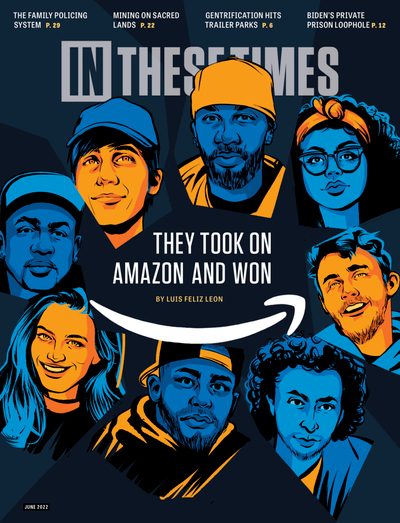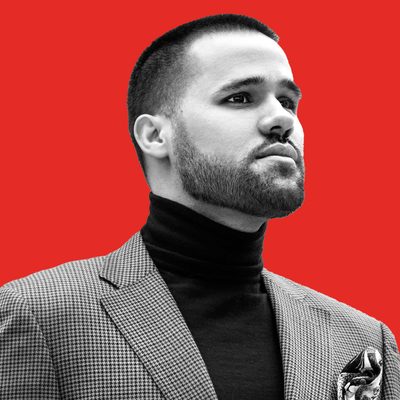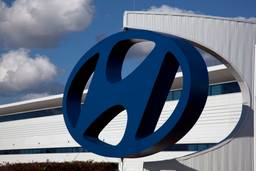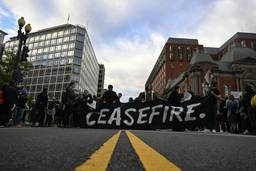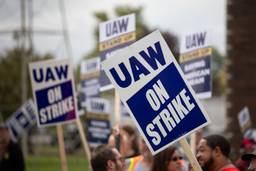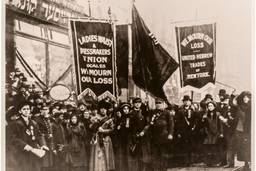These Are The Workers Who Took on Amazon, and Won
Against all odds, Amazon workers in New York organized a successful union against one of the biggest companies in the world. Here’s how.
Luis Feliz Leon
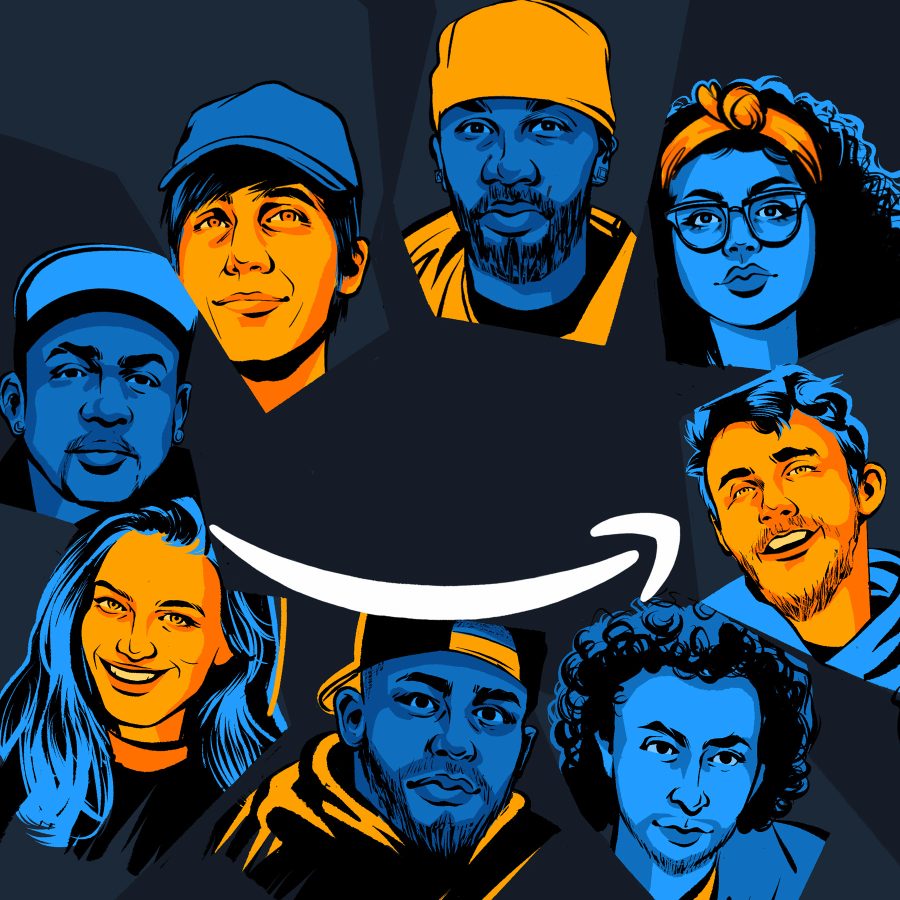
“Hey, Jeff Bezos, I’m going to let you know something today: We are just getting started,” Chris Smalls declared at an August 2020 protest in Washington, D.C. August 2020 was the month Amazon founder Jeff Bezos became the richest person in recorded history.
Outside of his $23 million, 27,000-square-foot pied-à-terre, a group of Staten Island Amazon workers and a crowd of supporters erected a mock guillotine.
“Give a good reason why we don’t deserve a $30 minimum wage when this man makes $4,000 a second,” Smalls went on.
After leading a walkout over Covid-19 safety at Amazon’s mammoth JFK8 warehouse in March 2020, the first month of the pandemic, Smalls and his coorganizers took their rebellion on the road that summer. Outside Bezos’ mansions — a $165 million Beverly Hills home, a waterfront estate outside Seattle and a Fifth Avenue Manhattan penthouse — the group staged demonstrations denouncing income inequality and demanding wage hikes and protections for workers given the pandemic designation of “essential.”
At each stop, they quietly grew the ranks of supporters who also sensed that the scrappy movement was the start of something big.
Those early supporters included Cassio Mendoza, then 21, who decided to show up to the October 2020 protest in Beverly Hills after connecting with Smalls on Instagram.
“Wow, this is really different,” Mendoza remembers thinking at the protest.
“Talking about billionaires, ‘They gotta go.’ Damn! This is really radical.”
Mendoza would soon move across the country to take a job at JFK8 and ultimately help win the first-ever union at any of Amazon’s U.S. warehouses.
Since the Amazon Labor Union’s stunning win in April, much of the media analysis around the victory has been centered on Smalls. Just as important, however, is the collective story of the workers who charted their own path against one of the world’s biggest companies.
What became the Amazon Labor Union (ALU) brought together an organic group of leaders demanding safety and dignity at Amazon — some with prior union experience — and a diverse, roving band of socialists in their 20s seeking to join a righteous labor fight. After setting their sights on a union election at the JFK8 warehouse, the group was joined by veteran warehouse workers who brought a deep bench of experience and relationships to the campaign. All of them were essential to the ALU’s upset win to represent more than 8,000 warehouse workers.
In May, Amazon’s union-busting efforts dealt the ALU a defeat in its second union election, this time at LDJ5, a smaller sort center across the street from JFK8. Out of roughly 1,633 employees eligible to vote in the election, nearly 1,000 cast ballots, with 380 workers voting in favor of the union and 618 against.
The outcome is disappointing but not entirely surprising for ALU leaders, who say they faced even steeper odds at LDJ5, a newer facility comprised largely of part-time workers. After the union’s first win sent shockwaves through the U.S. labor movement, the ALU says that hundreds of Amazon workers nationwide have reached out for support in their own organizing efforts. There’s every reason to think that the ALU is still just getting started.
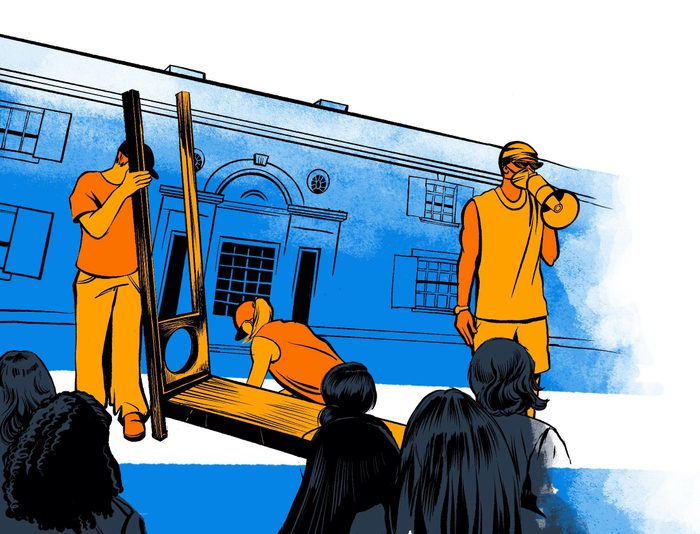
ESSENTIALLY DISRESPECTED
It’s fitting that the last day of voting at JFK8 fell on March 30, marking the two-year anniversary of the walkout that jumpstarted the organizing effort there.
Staten Island’s first case of Covid-19 case was confirmed March 9, 2020. Things escalated quickly in the following weeks.
While infections rose, “They weren’t giving us masks,” says Gerald Bryson, a warehouse picker in his 50s who had been a union member at previous jobs.
Instead of responding to the pandemic, Amazon organized what Derrick Palmer, 33, describes as a “mini-carnival” to recruit workers to racial and ethnic affinity groups, crowding employees into a small room and handing out plates of food while people milled about maskless.
“They totally disregarded Covid,” Palmer remembers. Worker Jordan Flowers, then 21, has lupus and was awaiting a kidney transplant, which put him at high risk for Covid complications. As Flowers saw stories of people dying across the country that March, he grew increasingly concerned about the lack of personal protective equipment at work.

“I’m my mom’s only child,” Flowers says. “I wasn’t gonna risk my life to work for this company.” Amazon had already fired him once anyway, when he took short-term disability in 2019, but the company reinstated his employment shortly after he challenged the termination.
Chris Smalls’ job as a process assistant at the warehouse, a training role adjacent to management, gave him responsibility for approximately 60 people. Alarmed that managers weren’t properly notifying employees when someone they’d worked with tested positive for Covid, Smalls took it upon himself to warn workers of their possible exposure.
Jason Anthony, 36, was one of the workers under Smalls. “Our relationship evolved from a worker-supervisor thing to a brotherhood, a bond that will never be broken,” Anthony says. “We call each other brother and sister. We care about each other. That’s something that Amazon doesn’t even do — care about their own people.”
In the afternoon of March 30, 2020, workers filed out of the New York warehouse, led by Bryson, Palmer, Flowers and Smalls. They demanded Amazon close the facility for cleaning and offer employees paid time off in the meantime.
“Alexa, please shut down and sanitize the building,” one of their protest signs read.
Amazon fired Smalls that day, claiming he violated the company’s quarantine rules. Amazon fired Bryson the next month, though an administrative law judge ordered the company reinstate him two years later in April 2022. Amazon gave Palmer a “final warning” and put Flowers on medical suspension.
According to a leaked memo, Amazon’s chief counsel denigrated Smalls soon after, calling him “not smart, or articulate” and suggesting a press narrative of “us versus him.” Amazon did not respond to a request for comment.
This narrow focus on Smalls ultimately backfired on Amazon, elevating Smalls to the status of a martyr while underestimating the depth of worker anger. The more that Amazon singled out Smalls, the more organizers could focus on talking to their coworkers and bringing new people into the union campaign.
Meanwhile, Smalls’ story reached workers far and wide. Brett Daniels, 29, got in touch with Smalls via social media after the walkout. At the time, Daniels was working at a dine-in movie theater in a suburb of Phoenix. When he was laid off due to pandemic-related closures, he picked up a job as a seasonal hire at an Amazon facility in Arizona with the hope of organizing among fellow workers. The child of a union firefighter and flight attendant, Daniels hoped to organize a union after years of community organizing experience, including the Fight for $15 in Tucson, Ariz.
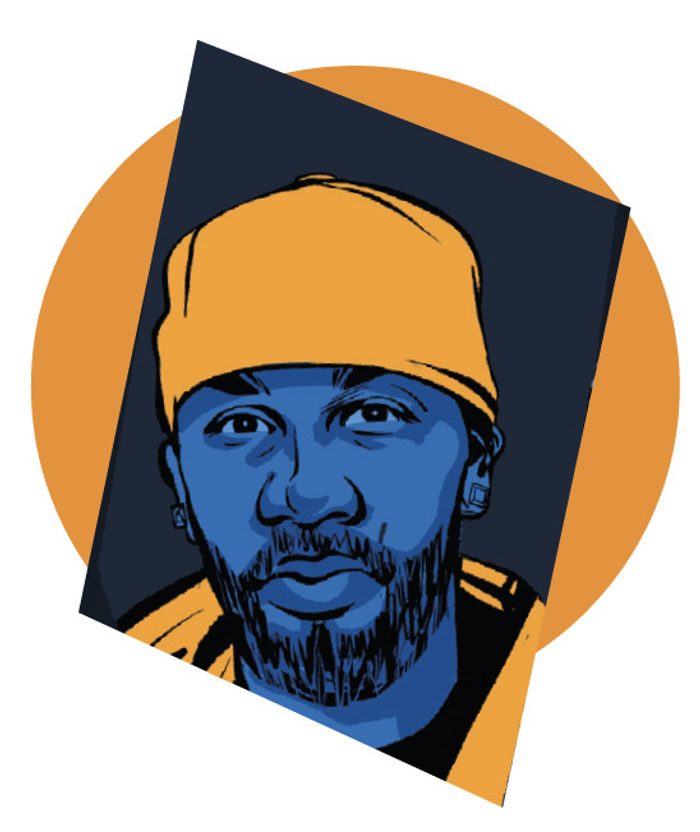
Inspired by the pandemic walkout, Daniels moved to Staten Island in November 2021 and was rehired at Amazon. “Almost all — if not all — of the organizers here were inspired by Chris, Derrick, Gerald and Jordan leading that walkout,” Daniels says.
Connor Spence, 26, also relocated from New Jersey to take a job at JFK8 in May 2021, shelving his aviation training to become an organizer instead of a pilot.
Smalls’ story “was emblematic of everything that’s wrong with Amazon — everything that’s wrong with society at the time,” Spence says.
Instead of backing down after his firing, “Chris was motivated to take the momentum and use it to fix the things he saw that were wrong with Amazon,” Spence says. “That was inevitably going to attract other people who wanted to actually step up, take action and change things.”
A UNION IS BORN
On May 1, 2020 —International Workers’ Day — Smalls, Bryson, Flowers and Palmer launched the Congress of Essential Workers, a predecessor to what would become the Amazon Labor Union. The group’s original goal was to unite frontline workers across industries in the fight for better conditions and pay. Jason Anthony joined up after he was fired from Amazon in July 2020.
The group envisioned a broad working class struggle against billionaires profiting from the pandemic — and they didn’t mince words.
“The capitalist economy of the U.S. is built off the backs of a class of underpaid people who are degraded to wage laborers and valued only for what they produce, not for their intrinsic value as humans,” reads the Congress of Essential Workers’ website.
As they traveled the country to protest at Bezos’ mansions, the group forged stronger bonds with each other while welcoming newcomers, an approach Smalls describes as “all-inclusive” with a caveat.
“It is Black-led, and we’re gonna keep it that way,” Smalls says he would explain as people joined. “Once we have that understanding, we let them in. And they’ve been with us ever since. There’s loyalty, and there is trust. They’re family members.”
In summer 2020, Spence traveled from his home in New Jersey to the Manhattan protest outside Bezos’ penthouse. “We really only talked for about two minutes,” Spence says of his first time meeting Smalls. Nonetheless, Spence was quickly added to an organizer chat group. He is now the ALU’s vice president of membership.
“One of the signs of a good organizer is believing fundamentally that working-class people are smart and capable,” Spence says. “So building an organization where you tried to make everybody have a part in the democratic process, let everybody have a role in it — that’s going to be a successful organization of working-class people.”
That’s the same ethos that drew in Cassio Mendoza at the October 2020 rally outside of Bezos’ Beverly Hills home.
A committed socialist and the son of a videographer with Unite Here Local 11, Mendoza was skeptical of staff-led organizing. He saw in Bryson and Palmer genuine rank-andfile leadership and was especially impressed that Palmer had flown to Los Angeles after finishing up a shift at Amazon. The Congress of Essential Workers “didn’t seem manufactured in any way,” Mendoza says.
A Los Angeles native, Mendoza typically wears a blue L.A. Dodgers hat, loose black T-shirts and beige khakis — wardrobe choices that match his understated personality. Despite his attempts to fade into the background, Mendoza became a pivotal campaign organizer. By June 2021, he had packed up and moved to New York. He began working at Amazon a month later, with the intention of helping the organizing effort.
But at that point, the labor fight was still solely about garnering more respect for workers, and the group mostly wanted to convene Amazon workers across the country for a national conference. “They didn’t even say the word ‘union,’” Mendoza remembers of those early conversations.
“The idea was to have us all come together under one banner,” Spence says.

As members of the Congress of Essential Workers began reaching out to other worker groups through social media, they learned that most didn’t have a real organizing presence inside Amazon. One exception was Amazonians United, a loose network of worker committees in the United States and Canada. That group’s organizing model is based on “solidarity unionism,” in which workers begin acting like a union without any official, government recognition.
The organizers on Staten Island opted for a different approach when they formed the Amazon Labor Union, although members of Amazonians United have lent support to the union drive at LDJ5.
Bryson had been a member of multiple New York City unions, including the Service Employees International Union Locals 32BJ and 1199, and the American Federation of State, County and Municipal Employees District Council 37. And Smalls had once been a Teamster before working at Amazon, leaving what he describes as “a bad contract.”
While the Congress of Essential Workers at first resisted the idea of a formal union, that changed after the Retail, Wholesale and Department Store Union (RWDSU) lost its campaign to unionize an Amazon warehouse in Bessemer, Ala., in April 2021. (As of press time, the outcome of the second election in Bessemer is still pending.) Put off by RWDSU’s approach, which leaned on politicians and celebrities to gin up support among Amazon employees, Smalls and the other organizers thought they could do better.
“We know the ins and outs of the company,” Smalls explains. “Derrick is a six-year vet. I worked there for almost five years. Who better to lead the fight than us?”
As they discussed the idea of a new, independent union to keep workers in the driver’s seat, they looked for examples of other militant unions. Mendoza was especially inspired by William Z. Foster, a Communist organizer in the steel industry in the 1930s. Spence turned to Labor Law for the Rank & Filer from Daniel Gross and Staughton Lynd, and he distilled lessons from labor studies and copious online research into presentations for the organizing committee — including how to take on union-busting consultants on the shop floor. For language on inclusion, the group referenced Unite Here’s national constitution. For union democracy structures — including how union officers’ salaries should be pegged to the average wages of the union membership — they looked at the United Electrical Workers.

All of these ideas would be reflected in ALU’s constitution.
“Let’s combine the union model with the rank-and-file committee model,” Spence recalls discussing with Smalls. “Each building has a worker committee that is the main decision-making body of the union.”
Ultimately, the group eschewed abstract theories and rigid methods and looked to workers to act.
“Screw it,” Spence recalls saying. “Let’s just go to JFK8, Chris’s old building, and organize workers there. It’s probably the best building to start a union campaign.”
THE DRIVING FORCE
It’s hard to overstate the odds stacked against an independent union taking on Amazon.
It’s not just that Amazon has a storied union-busting record. The company’s size and ubiquity make it an unavoidable part of modern American life, compunctions of conscience about the welfare of its workers aside. Amazon’s sprawling warehouse and logistics network delivers billions of boxes of stuff annually to its 153 million Amazon Prime members, with 40% of all online purchases in the country originating through Amazon, compared with just 7% at Walmart. More than 1.1 million people now work at Amazon’s more than 800 U.S. warehouses, and Amazon is projected to employ 1% of all U.S. workers in the next few years.
What’s more, employee turnover inside Amazon facilities is constant. Amazon’s annual churn rate — representing the number of employees leaving the company each year compared to their total number — is about 150%, which Bezos has said is by design to prevent what he called a “march to mediocrity.”
That high turnover made Amazon warehouse veterans, like Michelle Valentin Nieves (who’s been there three years), invaluable organizers. Inside the JFK8 warehouse at the height of the pandemic, Valentin Nieves was growing increasingly frustrated. Managers would reprimand her on the shop floor while she was risking a Covid infection.

In the first months of the pandemic, Valentin Nieves watched CNN for live updates on infections, hearing false reassurances from former President Donald Trump. “Then, come to find out, there were people actually coming up with Covid-19 already in the facility. And they were trying to keep it a secret.”
As Valentin Nieves waited to get vaccinated in 2021, “I was just losing my mind,” she says. “I’m like, ‘I’m gonna get it. I’m gonna bring it back to the house. I’m gonna give it to my family.’ ”
When Palmer approached Valentin Nieves to sign a union card in 2021, she didn’t skip a beat. Valentin Nieves would go on to read Martin Jay Levitt’s Confessions of a Union Buster and become a fierce worker organizer, connecting especially with Latino workers for whom she was a familiar face.
Valentin Nieves, who is from Puerto Rico, says good organizing entails good listening, so she would take her time to hear workers’ grievances and provide feedback. During one of these chats, she talked with a worker who had foot spurs from standing for prolonged hours at Amazon. Eventually, Valentin Nieves helped the worker file multiple requests for medical accommodations until they finally got approved.
Brima Sylla, 55, a widely respected immigrant worker from Liberia with a doctorate in public policy, started working at Amazon in January 2022 and joined the union campaign in March. He had come to Amazon after 10 years of teaching at a small private school on Staten Island, which laid him off during the pandemic. He quickly grew tired of the ambulances blaring to the warehouse entrance to ferry an injured worker to the hospital. Nationwide, workers at Amazon suffered 27,700 injuries in 2020 and 38,300 in 2021. The company accounts for nearly half of all injuries in the warehouse industry— a rate of 6.8 per 100 workers.
Sylla says he organized to build the union to make Amazon a dignified workplace, because “the company just wants money, money, money. They forgot about the human side of the workers. The job is damn hard.”
Pasquale “Uncle Pat” Cioffi, a former longshore worker with the International Longshoremen’s Association for about nine years, had been reticent about supporting the union when he was first approached. He scolded organizers for making promises about wage hikes before even securing a contract.
But when he saw cops arrest Smalls, Daniels and Anthony for trespassing as they delivered food to workers in February, Cioffi changed his mind.
“At the end of the day, they were dropping off food,” Cioffi says.
Cioffi occasionally wears Nike tracksuits and a yellow Amazon vest adorned with pins and the words “Italian G.O.A.T.” emblazoned on the back. Like Smalls, he is a process assistant. When he speaks, he jabs his fingers at your upper body to punctuate a point, evincing a self-confidence that enraptures listeners. Workers say he personally flipped hundreds to support the union.
“People tend to go with people that they trust,” Cioffi explains. “Everybody knows me from day shift, any shift, any department. They know who I am because I’m always making that extra effort to help them out in whatever the situation is.”
“Amazon didn’t make this about the ALU,” Cioffi adds. “They made it about Chris Smalls. But this wasn’t really about Chris Smalls. This was about the people.”
Karen Ponce, 26, is one of those people. She had started working at an Amazon delivery station in 2020, intending to save up money for a master’s degree in social work. After a layoff without warning, Ponce was rehired at JFK8.

Though she had been active in immigrant rights causes in college, Ponce says she didn’t understand unions and initially bought into Amazon’s anti-union propaganda. “I was brainwashed, even scared,” Ponce says.
Her thinking began to shift after reaching out to her college sociology professor, who encouraged her to talk to the organizers. Connor Spence answered Ponce’s list of questions about dues and the union election, and they talked about working conditions.
“They understood the toxic work environment because they were workers themselves,” Ponce says.
As Ponce learned that some of her coworkers were living in their cars and homeless shelters, she began to connect the organizing drive to her social work calling. She began studying labor history and read Jane McAlevey’s A Collective Bargain. Not only did Ponce eventually join the union effort, she became the ALU’s secretary in December 2021.
Arlene Kingston, meanwhile, supported the union effort from the get-go. She grew up talking politics and had strong municipal unions in her native Trinidad and Tobago.
Kingston and another coworker aided the union effort by offering free food in the break room, cooking peas and rice, chicken and macaroni pie to give out. “And if we have to do it again, we’re gonna do it again over and over,” Kingston says.
She relishes how “a little person that you underestimated” defeated Amazon. “And that is just the beginning.”
SOLIDARITY & INDEPENDENCE
The Amazon Labor Union had no time to waste after the victory at JFK8. As messages of support poured in from Amazon workers nationwide, the priority quickly shifted to the vote at the next warehouse, LDJ5, where roughly 1,500 workers sort packages for delivery to the New York City metro area.
Less than a month after voting wrapped up at the first facility, workers at the second facility began casting ballots. In a May 2 vote count conducted by the National Labor Relations Board (NLRB), the union came up short.
Compared to the first warehouse, relatively few of the ALU’s key organizers work at LDJ5. That posed a tougher challenge for those who do, including Julian Mitchell-Israel, 22, who first sent Smalls his resume after reading an article about the ALU in the socialist magazine Jacobin.
Mitchell-Israel had been involved in electoral politics, including Independent Vermont Sen. Bernie Sanders’ 2016 presidential bid, but says he learned a crucial lesson about organizing over the course of a high-stakes campaign at LDJ5.
“When you’re up against misinformation, when you’re up against people that are violently anti-union, you have the instinct to sort of get on the defensive, to go — ‘Screw you, you don’t understand you’re being brainwashed, whatever,’ ” Mitchell-Israel says. “When it comes to organizing, you have to be vigilantly kind. And it takes discipline. And it takes a sort of militancy and love. People need to have unlimited chances here.”

Madeline Wesley, another LDJ5 employee, arrived from Florida in August 2021. Wesley, 23, had been a student activist at Wesleyan University in Connecticut. It was there that Wesley met ALU’s pro bono lawyer, Seth Goldstein, who was representing the university’s physical plant workers and clerical workers. After stints working for Unite Here union locals in Boston and Miami, Wesley joined the Amazon campaign on Goldstein’s urging and soon became ALU’s treasurer.
After the upset victory at JFK8, “some of us thought that LDJ5 would be an easy win,” said Wesley before the vote. “And what we realized was that we were absolutely wrong. Amazon is really angry at us for winning JFK8, they weren’t expecting it at all. And now they’re giving us everything they’ve got here at LDJ5.”
Wesley says she and her fellow workers at LDJ5 faced a bruising campaign in which Amazon doubled down on its union-busting tactics. The company is also seeking to overturn the election results at JFK8 through an appeal to the NLRB.
On April 24, the day before voting began at LDJ5, national labor leaders rallied at Amazon’s Staten Island campus in a bid to boost support.
The mood at the “Solidarity Sunday” rally was jubilant. Surrounded by Amazon workers and hundreds of their supporters, Bernie Sanders and Rep. Alexandria Ocasio-Cortez (D-N.Y.) also delivered fiery speeches.
Many union leaders pledged their full support of the ALU — including Mark Dimondstein, president of the 200,000-member American Postal Workers Union; Sara Nelson, president of the Association of Flight Attendants-CWA; and Randi Weingarten, president of the American Federation of Teachers. Earlier in April, Sean O’Brien, new president of the Teamsters, met with Smalls and Derrick Palmer, ALU vice president of organizing, in Washington, D.C.

“We work in the same industry as all of you — and we’re either going to rise together or we’re gonna fall together,” Dimondstein said at the rally.
Smalls welcomes the support but remains unequivocal about the union’s independence. “Everybody knows that we’re gonna remain independent,” Smalls said at the rally. “And these bigger unions know — every time I meet with one of their presidents, I let it be known — there ain’t no strings attached.”
With hopes of unionizing a second facility postponed for now, the ALU still has another momentous task before it: winning its first collective bargaining agreement with Amazon. If the new union can channel its broad national support and deep connections inside JFK8 into improved conditions at that warehouse, it will make a clear case to Amazon workers elsewhere that they should join up.
“There’s no way we’re going to stop or let this bring us down,” said ALU’s co-founder Derrick Palmer at an impromptu press conference following the May 2 loss. “It’s going to do the complete opposite. We’re going to go 10 times harder.”

I hope you found this article important. Before you leave, I want to ask you to consider supporting our work with a donation. In These Times needs readers like you to help sustain our mission. We don’t depend on—or want—corporate advertising or deep-pocketed billionaires to fund our journalism. We’re supported by you, the reader, so we can focus on covering the issues that matter most to the progressive movement without fear or compromise.
Our work isn’t hidden behind a paywall because of people like you who support our journalism. We want to keep it that way. If you value the work we do and the movements we cover, please consider donating to In These Times.
Luis Feliz Leon is an associate editor and organizer at Labor Notes.
